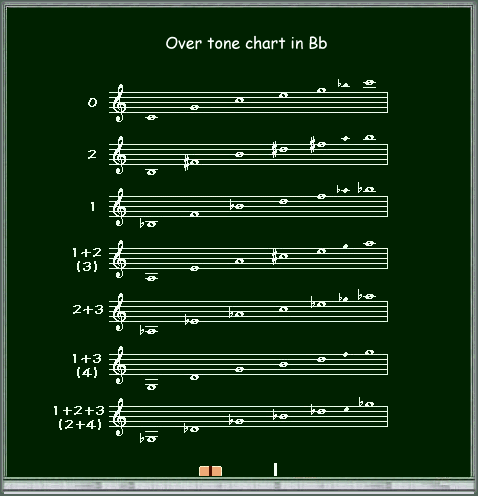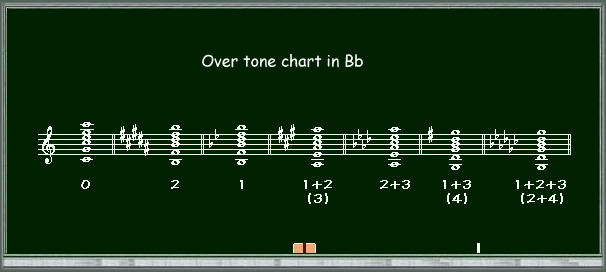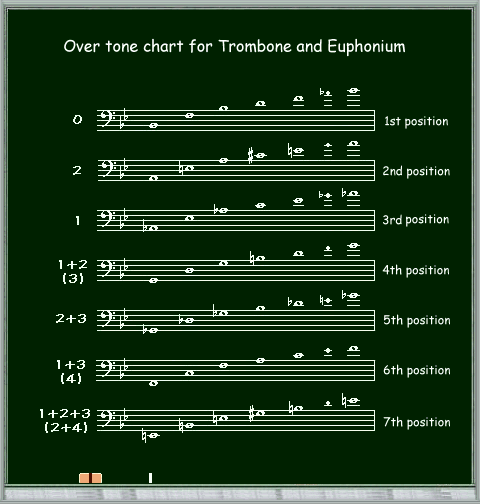The chart below shows the harmonics of the trumpet and alto horn in musical notation. By using the fingerings written on the left side of each line, you can produce the sounds written on the score (and even more if you become more skilled) by controlling your breath and mouth.
The sounds written on the chart are different from the sounds that actually come out.
For British brass band notation, please also refer to this harmonic chart for trombone, euphonium, and tuba.
The harmonics in this chart are arranged in order of pitch to create the Brass Instrument Fingering Chart.
The second note from the right (the small note) is not usually used in pieces because it is a lower pitch.

To summarize by fingering:

Depending on the overtone, 1 and 3, or 1, 2 and 3 may result in a higher pitch. In such cases, on euphoniums and tubas that have four pistons, you can adjust the pitch by using the 4th piston.
Instead of pressing pistons 1 and 3 at the same time, press 4th piston, and instead of pressing pistons 1, 2 and 3 at the same time, press pistons 2nd and 4th.
This is a harmonics chart for actual sounds (the sounds written on the sheet music are the same as the actual sounds) of trombones, euphoniums, etc.

The notes above are arranged according to fingering as follows.

The Bb bass (tuba) can produce a note one octave lower, but it is very difficult to produce the lowest range, and careful practice is required.